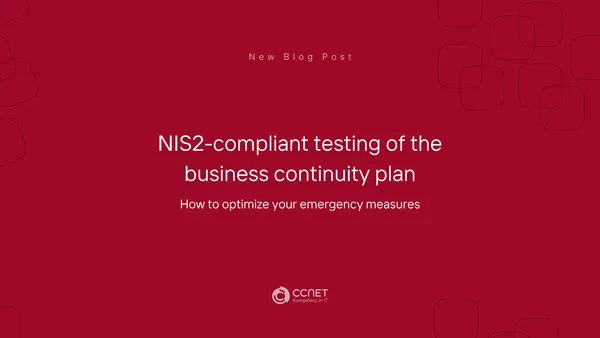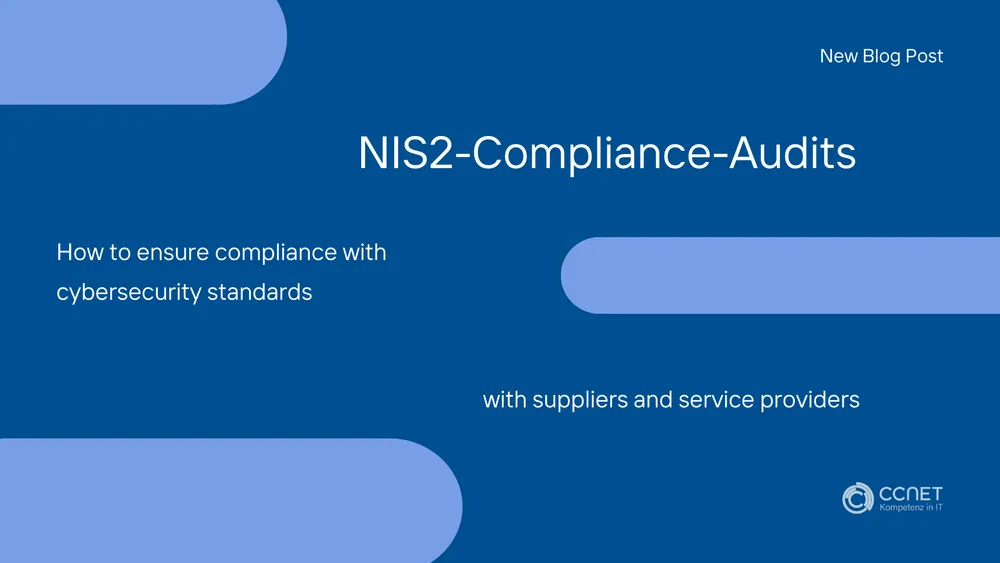
CCNet
Mar 19, 2025 • 2 min read

NIS2-compliant testing of the business continuity plan: How to optimize your emergency measures
NIS2-Compliant Business Continuity Plan Testing: How to Optimize Your Emergency Measures
The regular testing of a Business Continuity Plan (BCP) is crucial to ensuring a company’s ability to respond to emergencies and identify potential weaknesses in its emergency measures. This guide presents a method for conducting a comprehensive BCP test based on a realistic scenario.
Objective of the Test
The test aims to evaluate the effectiveness of emergency measures, uncover potential weaknesses in the plan, and ensure that all employees understand their roles and responsibilities during an emergency. By improving communication and coordination during a simulated incident, the efficiency of the BCP can be enhanced.
Test Planning
The test lasts approximately 4 hours and is conducted on a predetermined date. A test team, led by the Business Continuity Manager, includes the IT Security Officer, department heads, members of the Incident Response Team, and communications officers. The exercises take place in a simulated environment to avoid disrupting regular business operations.
Test Scenario
The test scenario simulates a cyberattack in the form of a ransomware infection that cripples critical systems. The Incident Response Team and department heads must then implement all the measures outlined in the BCP to ensure business continuity.
Scenario Phases:
- Incident Detection: Suspicious activity is detected, and a ransomware infection is identified.
- BCP Activation: The Incident Response Team is informed, affected systems are isolated, and the BCP is activated.
- Implementation of Emergency Measures: Data recovery from backups is simulated, while manual processes are activated.
- Operation Through Alternative Procedures: Work continues via backup systems, using alternative communication channels.
- Return to Normal Operations: Once IT systems are restored, the return to normal operations is tested.
Test Execution
The test leader initiates the test, explains the process, and assigns tasks. The simulated incident scenario is initiated, and all the measures outlined in the BCP are carried out. The test leader monitors the process, documents the team’s responses, and ensures that all steps are correctly implemented.
Documentation:
All actions, decisions, and issues encountered are recorded in real-time. After each phase, a feedback round is held to gather participants' observations.
Evaluation and Analysis
After the test, a debriefing is conducted where the test leader summarizes the results and gathers feedback. Weaknesses and problems are identified. A final report is then prepared, which includes a test summary, identified weaknesses, team responses, and the effectiveness of the emergency measures. The report is presented to management.
Improvement Measures
Based on the test results, an action plan is developed to address the identified weaknesses. Roles and responsibilities in the BCP can be adjusted, and emergency processes are optimized to better handle future incidents.
Training:
In addition, specific training sessions are held to prepare employees for their roles in the BCP and strengthen their response capabilities.
Approval and Archiving
After adjustments based on the test results, the updated BCP is approved by management. The test documentation and final report are archived for future reference and audits.
This approach ensures that the Business Continuity Plan is always ready for deployment and that the company can respond quickly and effectively to emergencies.
Conclusion
Regular and realistic testing of the Business Continuity Plan (BCP) is essential to ensure that emergency measures are effective and that employees know their roles and responsibilities in a crisis. By simulating cyberattacks, such as a ransomware infection, vulnerabilities can be specifically identified and improvements made. The structured testing process and participant feedback allow for continuous optimization of the BCP and adaptation to current threats. This way, the company remains prepared at all times and can act quickly and securely in an emergency, ensuring long-term business continuity.


